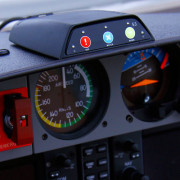Spider S2 tracking system & interface unit
To complement the hardware, easy to use software that is accessible from anywhere in the world has been created. The solution is completely web based, and can be used without installing special software.
The spider tracking unit is a compact, self contained unit that only requires an 10-32V DC power supply to operate. The spider is supplied with a cigarette lighter plug for easy connection to the commonly available power socket or it can be hard wired into the vehicle if you prefer. The light-weight design (360g) enables the spider to be held in a suitable position with velcro.
As the spider contains a GPS receiver and a satellite antenna, for reliable operation the spider needs a view of the sky. For example, in most aircraft and other vehicles, mounting on the dashboard will provide a sufficient view for reliable updates. Typically, glass and plastic do not effect the operation of the spider. The spider is small and compact, so there are many different mounting options and there is usually a suitable site for a covert location if required.
Mapping
Through a secure login, users can view current tracking reports in real time or past reports that have been saved for reference. The tracks are plotted on topographical maps for easy reference. Tracks can also be exported in a format compatible with the free version of Google Earth. Click on any of the below images to view sample tracks.
Position Updates
Upon powering the unit, a message to signify the start of a new track is sent to the web server, followed by a message indicating the current position of the spider. Position updates after the initial position report are based on 'triggers' or by request via the website. The triggers are configurable from the website and are based on distance or time, or a combination of both.
The distance trigger refers to the distance (km) from the last update of the spider, if the entered trigger distance is exceeded the spider will make an update.
The time trigger refers to the time elapsed (minutes) since the last update. Once the set trigger time has been exceeded the spider will send an update.
It is recommended that both trigger methods are used with appropriate values for the application. For example, helicopter tracking might use a distance trigger of 2 km and a time trigger of 3 minutes, so that if the helicopter was doing localised work within a 2 km radius then the spider would still send an update every 3 minutes.
Requests for an update via the website will only be acknowledged with the return of a position update when the spider has power.
Just like a mobile phone, the Spider Tracks System has a service cost. This is made up of a fixed subscription charge of $19.95 a month and then a data charge. The data charge varies according to the rate of position reporting you set up. The table below shows a guide to pricing.
| Position Reporting Interval In Minutes | Data Charge Per Flight Hour $ |
| 2 3 4 5 6 8 | 3.00 2.00 1.50 1.20 1.00 0.75 |
Example: Reporting the aircraft position every 5 minutes will cost $1.20 per flight hour.



